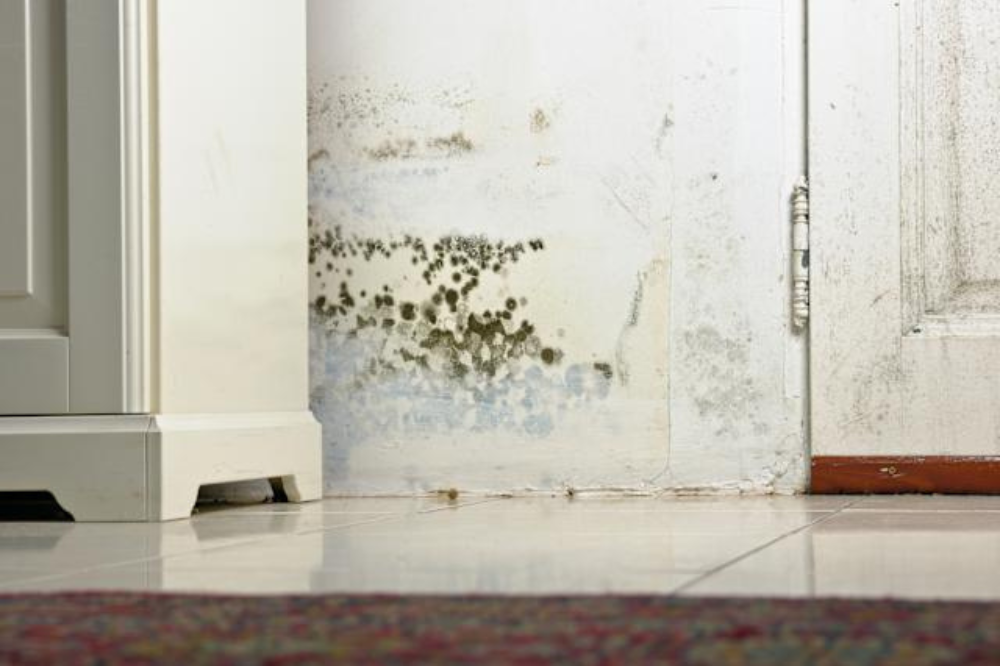If you’re looking to add a touch of elegance and sophistication to your woodworking projects, molding wood is an excellent way to achieve that. Molding wood is the process of adding decorative trim and design elements to wood pieces, enhancing their appearance and value. In this section, we will explore the various techniques and tips involved in molding wood, from choosing the right molding styles to mastering the art of wood molding.
Whether you’re an experienced woodworker or a beginner, this comprehensive guide will equip you with the knowledge you need to take your woodworking projects to the next level. Let’s dive into the world of molding wood and discover the possibilities.
Key Takeaways
- Molding wood adds decorative trim and design elements to wood pieces.
- The process involves choosing the right molding styles, wood types, and using essential tools for molding techniques.
- Precision in measuring, finishing, and maintaining the woodwork is essential to achieve flawless molding designs.
Importance of Wood Trim in Interior Design
When it comes to transforming ordinary spaces into stunning showcases of craftsmanship, wood trim and decorative molding can make all the difference. By adding intricate design elements and elegant finishing touches, interior spaces can be elevated to new levels of style and sophistication.
Wood trim is a key design element that can add warmth, depth, and texture to any space. It can be used to highlight architectural features such as windows, doors, and ceilings, and can also serve as a framing element for artwork and other decorative items.
Decorative molding is another important aspect of interior design that can enhance the aesthetic appeal of a space. From crown molding to chair rails to baseboards, decorative molding can add character and charm to walls, doors, and ceilings.
“Wood trim and decorative molding can transform ordinary spaces into stunning showcases of craftsmanship.”
Popular Molding Styles and Patterns
When it comes to molding styles and patterns, the possibilities are endless. From intricate details to clean lines, molding can add depth and character to any woodworking project. Here are some popular and visually appealing molding patterns and styles to consider:
| Molding Style | Description |
|---|---|
| Crown molding | An elegant molding style that can add a touch of sophistication to any interior space. Crown molding can be installed along the top of walls where they meet the ceiling. |
| Chair rail molding | A horizontal strip of molding installed along the walls, approximately 1/3 of the way up from the floor. Chair rail molding can add interest to a room while also providing functional benefits such as protecting the walls from chairs and other furniture. |
| Baseboard molding | A molding that sits at the bottom of the wall, used to cover the joint where the floor meets the wall. Baseboard molding can help to enhance the look of a room by covering gaps between the wall and floor and can also help to protect the walls from damage. |
| Wainscoting | A decorative wall treatment that involves installing paneling or molding on the lower half of a wall. Wainscoting can add texture and interest to a room while also providing functional benefits such as protecting the wall from chair backs and other furniture. |
Aside from these standard styles, there are also more unique and customized molding patterns that can be created to fit any design scheme. For example, geometric patterns or interlocking moldings can be used to create a modern and distinctive look, while sculpted moldings can add an artistic or whimsical element. Incorporating unique molding patterns and styles can take your woodworking projects to the next level, adding individuality and visual interest.
Molding Materials
Molding can be constructed from various materials, each with its unique look and feel. Here are some popular materials used in molding projects:
- Wood: Wood moldings are classic and elegant, with natural beauty and texture that can enhance interior spaces and add depth.
- Plaster: Plaster moldings provide an elegant look that can complement historic or traditional interiors. They are more expensive and difficult to install, but their longevity and durability are hard to beat.
- Polyurethane: A synthetic molding material that is more affordable and easy to install than wood or plaster. Polyurethane molding can mimic the look of wood, plaster or other materials, making it a versatile option that can fit a wide range of design styles.
When choosing a molding material, consider the design scheme, budget, and level of maintenance required for each option.
Choosing the Right Wood for Molding
The choice of wood for molding can have a significant impact on the quality and longevity of your woodworking project. Factors such as the wood’s durability, grain patterns, and ease of workability should be carefully considered when selecting the ideal wood for your molding needs.
One popular choice for wood molding is oak, which is highly durable and has a striking grain pattern that adds character to any woodworking project. Another option is pine, which is easy to work with and ideal for intricate molding designs due to its softness and lightness.
For a more exotic look, cherry wood provides a warm, reddish hue that can add a touch of elegance to any molding design. Alternatively, mahogany is an even darker wood that exudes sophistication and can be ideal for larger, more dramatic molding applications.
When choosing the right wood for your molding needs, it is important to also consider the wood’s finish, as it can greatly impact the final appearance and feel of the product. Whether opting for a stained or natural finish, understanding the characteristics of the wood species you select is crucial for achieving the desired outcome.
Wood Molding Types Comparison Table
Compare the different wood molding options and attributes to make the best decision for your woodworking project.

| Wood Species | Grain Pattern | Durability | Workability | Finish Options |
|---|---|---|---|---|
| Oak | Striking and visible grain pattern | Highly durable, resistant to warping and rotting | Difficult to work with due to its hardness, may require pre-drilling for nailing | Stains well for a natural or dark finish |
| Pine | Straight, subtle grain pattern | Softwood that is vulnerable to warping and rotting, but can be treated for improved durability | Easy to cut, shape, and sand, ideal for intricate molding designs | Can be painted or stained for a natural or colored finish |
| Cherry | Warm, reddish hue with a straight and subtle grain pattern | Medium durability, less resistant to wear and tear compared to oak | Easy to work with, ideal for carving and shaping intricate designs | Stains and finishes well, bringing out its natural beauty |
| Mahogany | Dark, rich color with a straight and consistent grain pattern | Highly durable, resistant to rot and insect damage | Hardwood that requires sharp blades and tools for cutting and shaping | Can be stained for a natural or darker finish, has a high natural sheen |
Consider your project needs and preferences when choosing the appropriate wood for your molding application. With the right selection, your woodworking project will have a strong and beautiful finish that will last for years to come.
Essential Tools for Molding Wood
To achieve the desired results in molding techniques, using the right tools is essential. By having the right equipment at your disposal, you can achieve precision and finesse in molding wood effortlessly. Below are some of the essential tools to have:
| Tool | Use |
|---|---|
| Wood chisel set | For cutting sharp corners and angles into the wood |
| Coping saw | Used for cutting highly specific curves and edges |
| Miter saw | Used for cutting precise angles and lengths of wood |
| Nail gun | Used for embedding nails quickly and efficiently into the wood without leaving visible marks |
| Wood file | Used for smoothing rough edges and giving wood a refined look |
Along with these tools, it is important to have a set of carving knives for intricate shaping of the wood. Other tools such as a hammer, hand saw, drill, and measuring tape are also essential for molding techniques.
It is important to maintain and properly use these tools to prolong their longevity and ensure safety. Use gloves, earplugs, and eye protection as needed while handling the tools.
By having the right tools and properly maintaining them, your molding wood projects can achieve a professional look with precision and finesse.
Step-by-Step Guide to Molding Techniques
Mastering the art of woodworking molding requires specific techniques. In this section, we will guide you through a step-by-step process to create professional-looking molding, including coping, mitering, and carving.
Coping Technique
The coping technique is used to join two pieces of molding at inside corners. Follow these steps:
- Cut the first piece of molding at a 90-degree angle and butt it into the corner.
- Cut the second piece of molding at a 45-degree angle.
- Use a coping saw to cut along the molding’s profile following the edge of the 45-degree angle cut.
- Smooth out the cut using a file or sandpaper.
- Butt the coped piece of molding into the corner, and it should fit seamlessly with the first piece.
Mitering Technique
The mitering technique is used to join two pieces of molding at outside corners. Follow these steps:
- Measure and mark the correct length of the molding.
- Set the miter saw to a 45-degree angle.
- Cut the first piece of molding at a 45-degree angle, ensuring the long end is on the molding’s backside.
- Cut the second piece of molding at a 45-degree angle, with the long end on the molding’s front side and in the opposite direction to the first piece.
- Test fit the two pieces together and make any necessary adjustments before securing them in place.
Carving Technique
Carving techniques can be used to add intricate designs to flat or curved molding pieces. Follow these steps:
- Choose a design or pattern and draw it onto the molding piece.
- Use a carving knife or chisel to remove the excess wood around the design carefully.
- Create depth and shadow by gouging small areas with the carving knife or chisel.
- Sand the piece to smooth any rough edges or surfaces.
| Molding Technique | Tools Required |
|---|---|
| Coping | Coping saw, file or sandpaper |
| Mitering | Miter saw, measuring tape, pencil |
| Carving | Carving knife or chisel, sandpaper |
Add an artistic touch to your woodworking projects with custom-made molding crafted using these molding techniques. Woodworking enthusiasts can achieve show-stopping results with these techniques in their arsenal.
Incorporating Molding in Different Woodwork Projects
Molding can add depth and character to any woodworking project, making it a great design element to incorporate into furniture, cabinetry, doors, and more. Here are some creative molding ideas and inspiration for using wood trim in your woodwork projects:
1. Furniture
Add a touch of elegance to your furniture pieces by using intricate wood molding designs. Crown molding can add a regal touch to the top of a bookcase or dresser, while baseboard molding can create a more finished look on the bottom of a table or cabinet. You can also experiment with adding molding to the edges of table tops or chair backs for added texture and visual interest.
2. Cabinetry
Molding can be used to transform plain cabinetry into stylish and personalized pieces. Crown molding along the top of kitchen cabinets can add height and a polished finish to the room, while decorative trim on cabinet doors and drawers can enhance the overall style of the space. Beadboard molding is another popular option for adding texture and depth to cabinetry.
3. Doors
Door frames are another area where molding can make a big impact. Adding molding around the perimeter of a door frame can create a cohesive look throughout a room, or you can experiment with using molding to create unique panel designs on the face of a door. For a more intricate touch, consider adding rosettes or corbels to the corners of a door frame.

4. Decorative Elements
Molding can also be a great way to add decorative elements to your woodwork projects. From framing out a fireplace mantel to adding molding around mirrors and artwork on the walls, there are countless ways to incorporate molding into your home decor. Try using crown molding to create a picture rail along the top of a wall, or install chair rail molding to separate different wall treatments. The possibilities for using molding as a decorative element are truly endless.
Precision and Measurement Tips for Molding Wood
Designing and creating flawless molding designs requires precision and accurate measurements. In this section, we will provide expert tips and techniques for ensuring that your woodworking projects achieve seamless molding designs.
Firstly, it is essential to use the right measurement tools to ensure that your molding is precise. A tape measure and measuring square are indispensable when taking measurements to ensure that angles and lengths are accurate. Also, do not forget to mark out your measurements clearly to avoid confusion when cutting the wood.
Another crucial factor in achieving perfect molding designs is to be patient and take your time. Rushing measurements and cuts can lead to errors and imperfections that detract from the finished result. Start with a small amount of wood when experimenting with different angles and techniques, allowing you to perfect your approach before committing to more significant pieces.
Properly aligning your woodwork is also vital when molding. It is important to ensure that all components are lined up and all corresponding angles are correctly oriented. Check your work regularly throughout the molding process to make sure that everything remains on track.
Finally, remember to take into account any adjustments needed for different types of wood. Different woods can react differently to pressure, humidity, and other external factors, which can noticeably affect the results of your molding techniques. Make sure you prepare the wood according to its specific properties to achieve the best possible outcome.
With these tips and techniques, you will be able to achieve perfect measurement and precision in your molding designs. Stay focused, patient, and attentive to your work’s details, and your molding designs will look professional and flawless in no time!
Finishing and Refining Molding Details
The final steps of molding are critical to achieving a polished and refined look. These steps include sanding, staining, and varnishing.
Sanding
Sanding is an important part of the finishing process. It helps to smooth any rough edges and create an even surface, ready for staining or varnishing. Start with a coarse grit sandpaper and gradually work your way up to a finer grit for a smooth finish. It’s essential to sand in the direction of the wood grain to avoid creating scratches on the surface.
Staining
Staining is the process of adding color to the wood. It enhances the natural grain pattern and brings out the wood’s beauty. Before applying stain, ensure that the surface is clean and dry. Use a brush or cloth to apply the stain in the direction of the grain. Allow the stain to dry for the recommended time before proceeding to the next step.
Varnishing
Varnishing provides a protective layer to the wood while enhancing its natural beauty. There are different types of varnishes available in the market, including oil-based and water-based varnishes. Before applying the varnish, ensure that the surface is clean and dry. Use a brush to apply a thin and even layer of varnish. Sand lightly between coats for a smooth finish.
“The finishing touches on molding can make or break the overall appearance and quality of the woodwork.”
By following these essential steps, you can create stunning molding designs that elevate the beauty of any woodworking project. Take the time to refine and perfect the finishing details to achieve a stunning and professional look.
Maintaining and Caring for Wood Molding
Proper maintenance is crucial to keep your wood molding in excellent condition for years to come. Caring for your molding involves regular cleaning, repairs, and protective measures. Here are some tips and recommendations for maintaining and preserving the beauty of your wood molding:
- Clean your molding regularly: Dust your molding with a soft-bristled brush or microfiber cloth regularly to prevent dirt and grime buildup. You can also use a gentle cleaner to wipe it clean.
- Protect it from moisture: Keep your molding away from wet spots. Avoid using excess water or cleaner when cleaning your molding.
- Inspect for damages: Regularly inspect your molding for any signs of cracks, chipping, or other damages. Repair any damages immediately to prevent further deterioration.
- Apply protective measures: Consider applying a protective cover on your molding to shield it from scratches and other forms of wear and tear.
By following these simple tips, you can keep your molding looking as good as new.
Image Caption: Protect your wood molding with regular maintenance and proper care.
Conclusion
Molding wood is an art that requires skill, patience, and precision. By following the techniques and tips outlined in this guide, you can elevate your woodworking projects to new heights of style and beauty. From the selection of the right wood to mastering the various molding techniques, every step in the process is crucial in achieving the desired results.
Remember to pay attention to the details in every aspect of the project, from measuring and cutting to sanding and finishing. With the right tools and techniques, you can create stunning molding designs that will last for years to come.
Whether you’re a professional woodworker or a novice DIY enthusiast, this guide has something for everyone. With the knowledge and skills gained from this comprehensive guide, you can take your woodworking projects to the next level. So, don’t hesitate to incorporate the molding techniques and ideas showcased here to make a lasting impression with your woodworking projects.
FAQ
What are the different molding styles available for woodwork projects?
There are various molding styles to choose from, including crown molding, baseboard molding, chair rail molding, and picture rail molding, among others. Each style serves a unique purpose and can add distinctive visual appeal to your woodworking projects.
How do I choose the right molding style for my interior design?
When selecting a molding style, consider the overall aesthetic of your space and the architectural elements present. Traditional molding styles like crown molding can add elegance, while clean and simple styles like baseboard molding can provide a more modern look. It’s important to choose a style that complements the design theme and enhances the overall ambiance of the room.
What are some popular molding patterns for woodworking projects?
There are countless molding patterns available, ranging from classic designs to intricate and ornate patterns. Some popular choices include egg and dart, dentil, ogee, and beadboard patterns. Experimenting with different patterns can add depth and visual interest to your woodwork.
What factors should I consider when choosing wood for molding?
When selecting wood for molding, consider factors such as durability, grain pattern, workability, and budget. Hardwoods like oak and cherry are popular choices for their durability and attractive grain patterns. Softwoods like pine can be more affordable and easier to work with.
What are some essential tools needed for molding wood?
Essential tools for molding wood include a miter saw, coping saw, chisels, sandpaper, clamps, and a nail gun. These tools help achieve precise cuts, smooth finishes, and secure installations.
How can I master molding techniques for woodworking projects?
To master molding techniques, practice is essential. Start with simple projects and gradually advance to more complex designs. Learn about different cutting and shaping methods, such as coping and mitering, and familiarize yourself with the specific tools and techniques required for each.
How can I incorporate molding in different woodwork projects?
Molding can be incorporated in various woodworking projects, such as furniture, cabinets, doors, and wall paneling. Consider using molding to frame mirrors, accentuate cabinet doors, or add decorative details to furniture pieces. The possibilities are endless for enhancing the visual appeal of your woodwork.
What are some precision and measurement tips for molding wood?
To ensure precision in molding wood, accurately measure the dimensions of the area where the molding will be installed. Use a combination of measuring tapes, squares, and levels to achieve precise angles and straight lines. Double-check measurements before making any cuts.
How do I finish and refine molding details?
To finish and refine molding details, start by sanding the wood to achieve a smooth surface. Apply wood stain or paint to enhance the appearance and protect the wood. Once dry, seal the molding with varnish or lacquer for added durability and a polished finish.
How do I maintain and care for wood molding?
Regular cleaning is crucial for maintaining wood molding. Dust the molding using a soft brush or cloth and avoid using harsh chemicals that may damage the wood. Repair any cracks or chips promptly and periodically apply a protective coating, such as wax or polish, to keep the molding looking its best.




